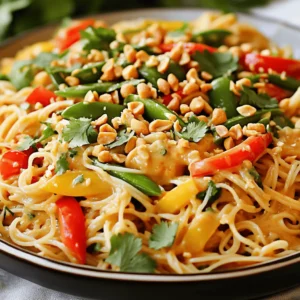
Thai Peanut Noodles
Craving a delicious and satisfying meal? Try these Thai Peanut Noodles! This quick recipe combines rice noodles with vibrant bell peppers, snap peas, and crunchy peanuts, all tossed in a creamy homemade peanut sauce. Perfect for a weeknight dinner, it’s ready in just 30 minutes! Click through for the full recipe and discover how easy it is to whip up this flavor-packed dish that will impress everyone at your table.